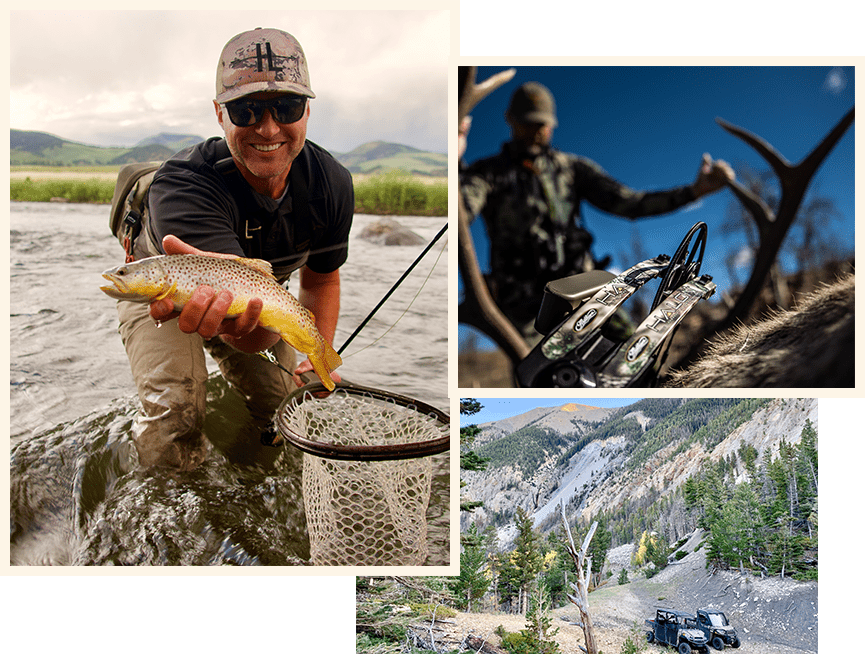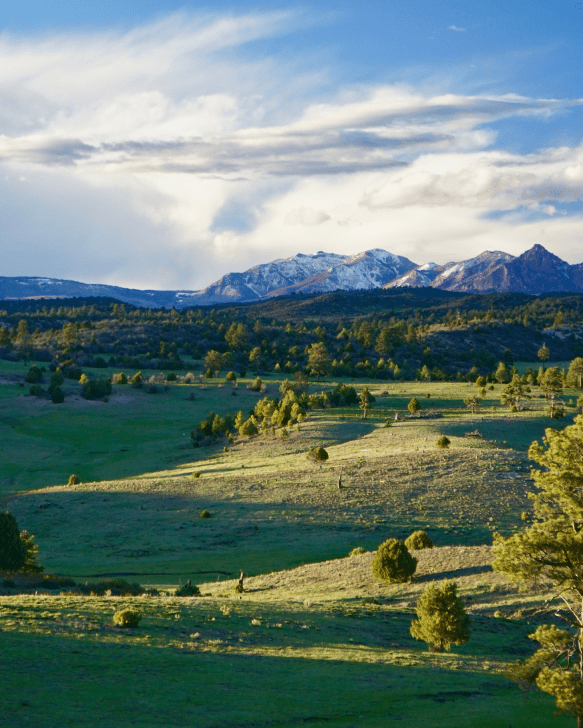Flyfishing in Low Water Mountain Ranches For Sale
There are times when flyfishing is really hunting in disguise. When water flow drops to barely stronger than a garden hose (typically during late summer and fall), it’s time to think like a hunter after a whitetail. Gone are the days of random casting and clumsy wading; it’s time to think about every aspect of the game like the archer after a trophy buck. The “whitetails with fins” will still be around, but you’re going to need to think harder and perform to perfection in order to gain the prize of a low-water trout. Thoughtful adjustments in approach, tackle and flies are all necessary for successful thin-water angling.
The main hurdle in low water fishing is the simple fact that trout are prey, and they are most vulnerable when their watery world shrinks and turns extremely clear. Keep in mind that although trout are easier to see in low water, you are easier for them to see as well. Thinking about approach before ever stepping into the water can make the difference between a banner day filled with large trout and a frustrating day filled only with the wakes of fleeing fish.
To be an approach-smart flyfisher, then, wear muted colors and hide or replace those flashy chrome tools that dangle from your vest and send out warning signals every time the sun strikes them. Think about where the sun is and try to keep it at your back instead of in your face. By all means, wade slowly and carefully, if you wade at all. You’ll also be smart to practice long, gentle presentations well before heading to the stream. Where a 30-foot cast can keep you into trout in early summer, by season’s end you should be proficient at 40- to 50-foot casts.
Good posture can be important too, but despite what your mother told you, in the case of low-water angling, “standing up straight” is anything but good posture. Crouching and kneeling are not unusual for low-water flyfishing. Like the smart bow hunter, “making yourself small” can pay big dividends.
Tackle-wise, think lighter and finer. A three-weight line makes far less disturbance landing on the water than a five-weight, so the rule in low water is to fish with as light a line as you can get away with. Double-taper lines also land more gently than weight-forwards. Longer, finer leaders also help give the angler an edge. On most streams, 10- to 12-foot leaders should be considered minimums in low water. In extreme conditions, 15- or even 18-foot leaders may be necessary, but are challenging to cast. With the exception of streamer fishing, using 6X tippets should be standard. Fluorocarbon is less visible to the fish, but does not float well, so should be used primarily for nymph or streamer fishing.
Finally, flies for low water are usually a size or two smaller than during normal flows. This is in part because of the usually-smaller size of late season insects (grasshoppers are an exception), but also because trout are generally more discriminating when the water is extremely clear. Where #16 Adams Parachutes were working in June, you may need #18s or #20s in September. The dreaded “short strike” refusal is often an indicator to switch to a smaller size of the same pattern. Hatches are often scarce during low water, so trying terrestrial patterns like ants, beetles and grasshoppers is a wise tactic. Nymphing can be extremely effective as well, but here, too, keep the patterns on the small side.
When the water’s down, your savvy needs to be up. Anglers who think like hunters on the stalk will be rewarded. Those that don’t, well, let’s just say that they’ll have a long day of casting practice.


